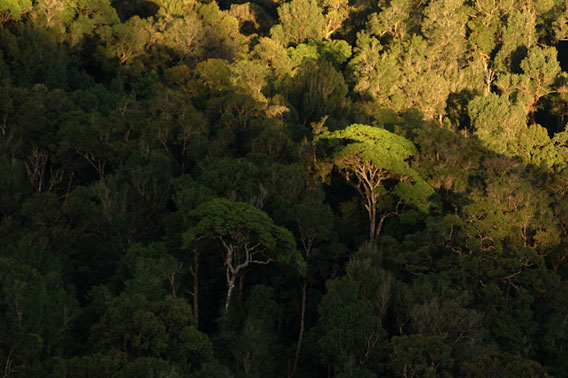
Rainforest of India’s Western Ghats. All photos by Kalyan Varma.
The rainforests of Western Ghats are home to some of the most wonderful creatures which are found only in these forests and no where else on the earth
The Lion-tailed Macaque Macaca silenus is the symbol of this endemic diversity of this biodiversity hotspot. Less than 2500 of these survive today making it one of the most endangered primates in the world
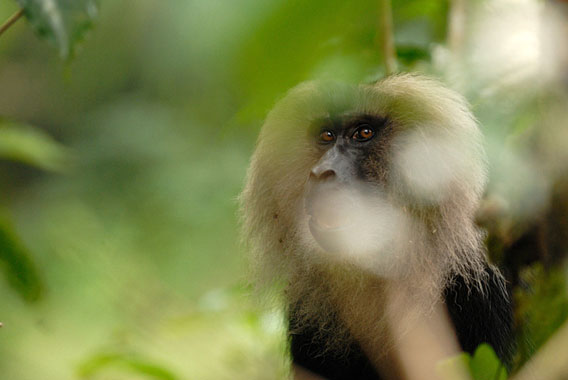
Since these primates have evolved in the rainforests, they have very simple stomachs which can easily digest fruits, seeds and insects. This adaptation has helped them be a habitat specialist of the tropical rainforest, where these are available throughout the year
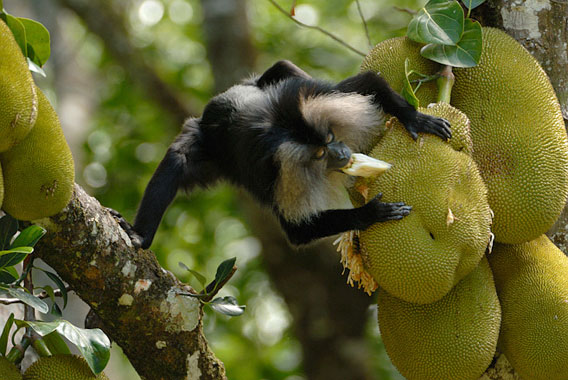
The other endemic primate is the Nilgiri Langur which is a purely leaf-eating primate. They do not compete with each other directly
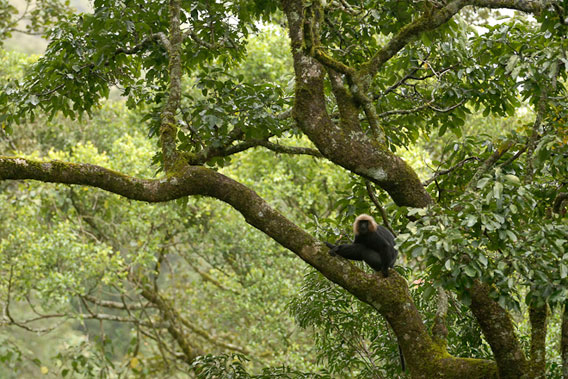
Good fruiting trees are of great demand and sometimes rival groups fight with one another to have rights over these trees. Its usually the alpha male of the group that engages in these fights, though other monkeys do join at times
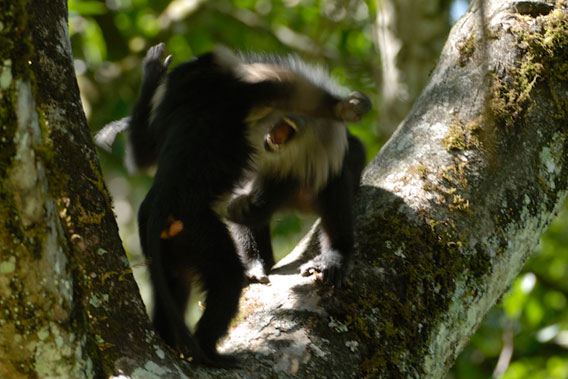
Males have canines, though mostly just to show them off to rival males. These large canines come in use when the macaques feast on fruits like jackfruits and Cullenia
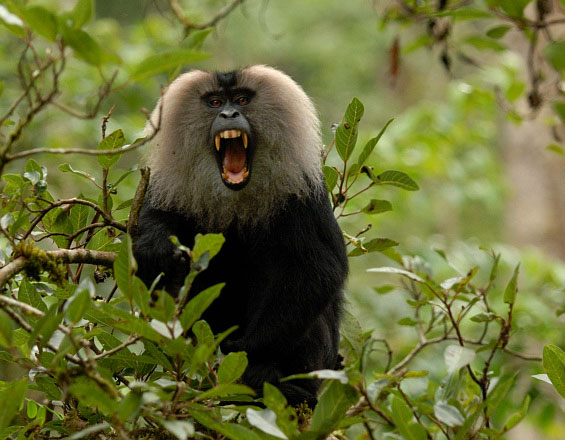
Being more of a meat-eating than other macaques of the world, the Lion-tailed Macaque sometimes hunt and feed on young ones of giant and flying squirrels
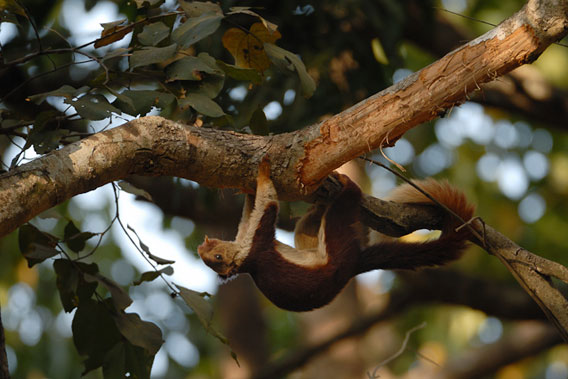
Cullenia is one of the keystone species of the Western Ghats. Their flowers and fruits serve as food for many of the rainforest species including the Lion-tailed Macaque
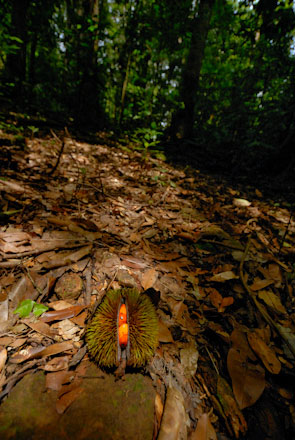
Being macaques, they tend to explore a lot and sometimes discover easy ways of finding food.
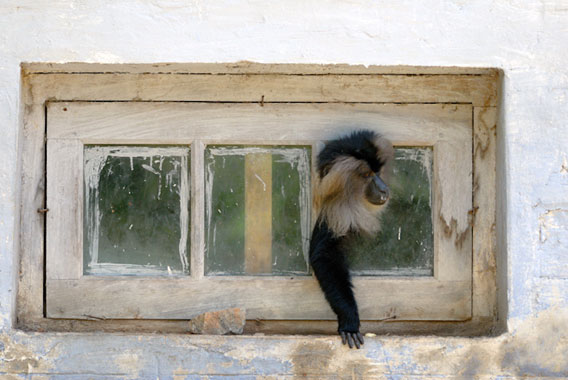
A lot of roads go through these forests breaking them into isolated fragments. These primates which very rarely step on the ground in undisturbed forests, are now forced to come down to cross these broken canopies. About 25% of the Lion-tailed Macaques are found in small isolated forest fragments
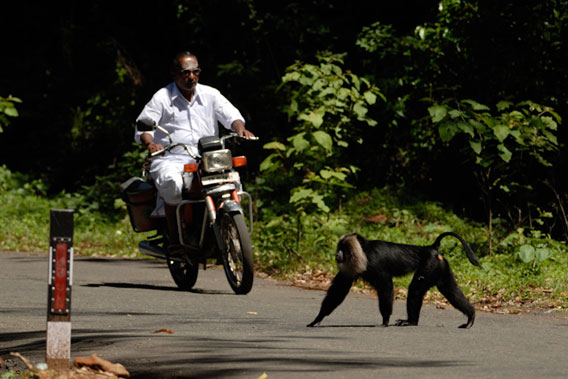
This often leads to tragic consequences further affecting populations of this endangered species

The reproduction cycles of these macaques are very slow. A female gives birth only once in three years and only the dominant female gives birth. Because of low birth rate and high age at first birth, it gives very little chance for these populations to bounce back.
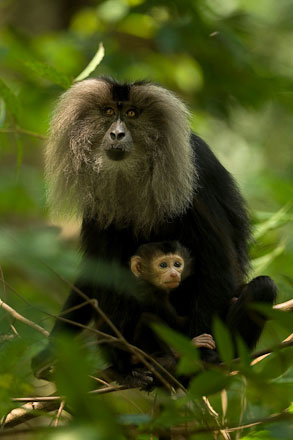
A very human-like fetus of a Lion-tailed Macaque.

In 2008, a healthy population of 32 groups of these macaques were found in central Karnataka giving hope to the future of these Knights of the Western Ghats.
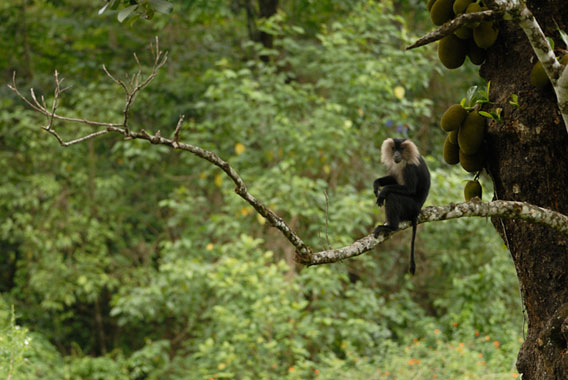
Kalyan Varma is a wildlife photographer based out of Bangalore, India. Varma’s web site is kalyanvarma.net
Related articles
Pictures: 12 new species of frog discovered in India
(09/15/2011) Scientists have discovered 12 new species of frogs in the rainforests of India’s Western Ghats, according to a paper published in the latest issue of ZooTaxa.
Photos: 10 new frogs discovered in India’s great rainforest

(08/09/2011) Ten new species of frog have been discovered in India’s Western Ghats according to two new papers in Biosystematica. Although human populations have farmed in the Western Ghats for centuries, the new discoveries prove that the rainforest still holds many surprises. The Western Ghats lie along India’s west coast and have been dubbed one of the world’s biodiversity hotspots, but the rich wildlife is imperiled by rising human impacts.
Balancing agriculture and rainforest biodiversity in India’s Western Ghats

(08/08/2011) When one thinks of the world’s great rainforests the Amazon, Congo, and the tropical forests of Southeast Asia and Indonesia usually come to mind. Rarely does India—home to over a billion people—make an appearance. But along India’s west coast lies one of the world’s great tropical forests and biodiversity hotspots, the Western Ghats. However it’s not just the explosion of life one finds in the Western Ghats that make it notable, it’s also the forest’s long—and ongoing—relationship to humans, lots of humans. Unlike many of the world’s other great rainforests, the Western Ghats has long been a region of agriculture. This is one place in the world where elephants walk through tea fields and tigers migrate across betel nut plantations. While wildlife has survived alongside humans for centuries in the region, continuing development, population growth and intensification of agriculture are putting increased pressure on this always-precarious relationship. In a recent paper in Biological Conservation, four researchers examine how well agricultural landscapes support biodiversity conservation in one of India’s most species-rich landscapes.
Back from a century of extinction, conservation proposed for elusive Asian flying squirrel

(06/27/2011) The Travancore flying squirrel (Petinomys fuscocapillus) occurs in the forests of the Western Ghats and Sri Lanka, a global biodiversity hotspot, and is listed as Near Threatened on the IUCN Red List. During the first half of the 20th century the species was thought to be extinct, but was rediscovered in the 1960s, then not seen again for over twenty years.
Cloud forest dung beetles in India point to ‘fossil ecosystem’
(03/28/2011) In the cloud forests and grasslands of India’s Western Ghats, known as sholas, researchers have for the first time comprehensively studied the inhabiting dung beetle populations. The resulting study in mongabay.com’s open access journal Tropical Conservation Science, has led scientists to hypothesize that the beetles in concordance with the sheep-like mammal, the nilgiri tahr (Nilgiritragus hylocrius), may be a sign of a ‘fossil ecosystem’.